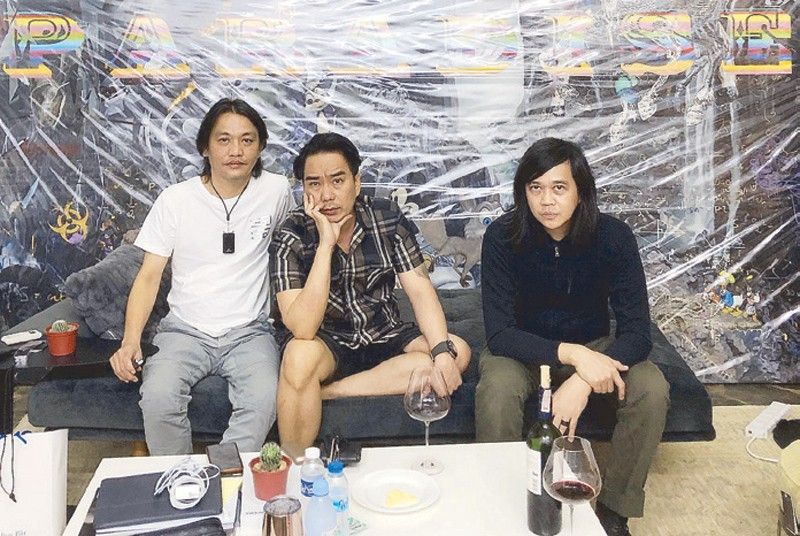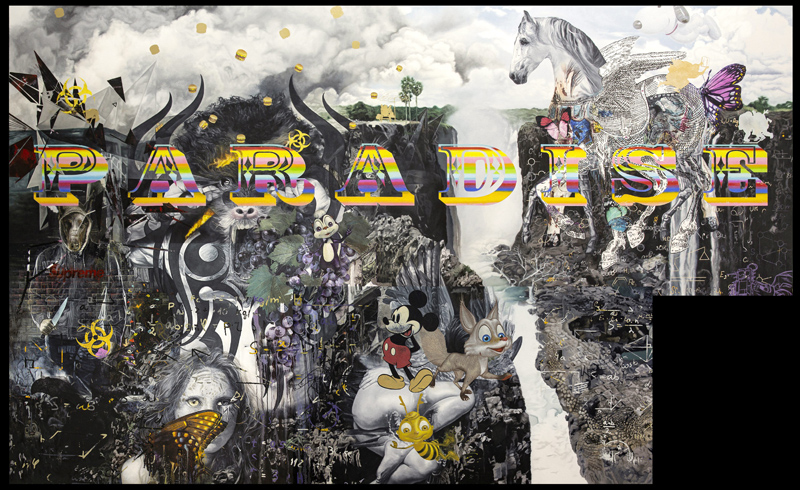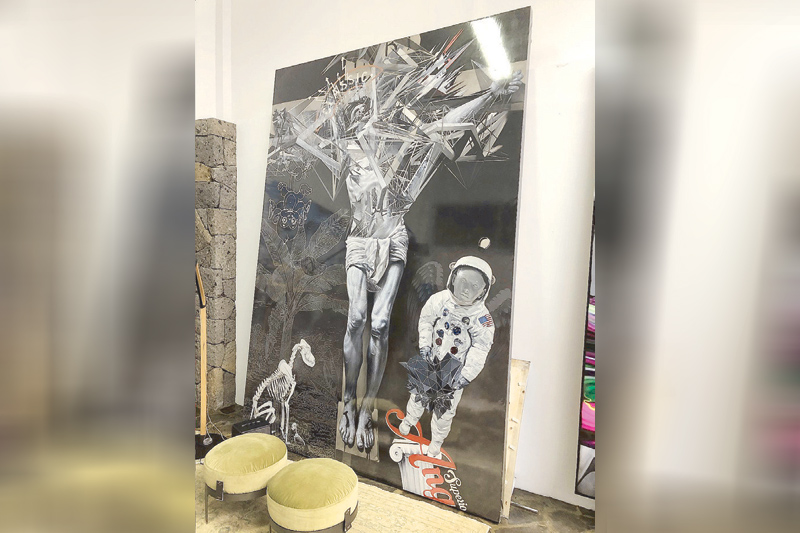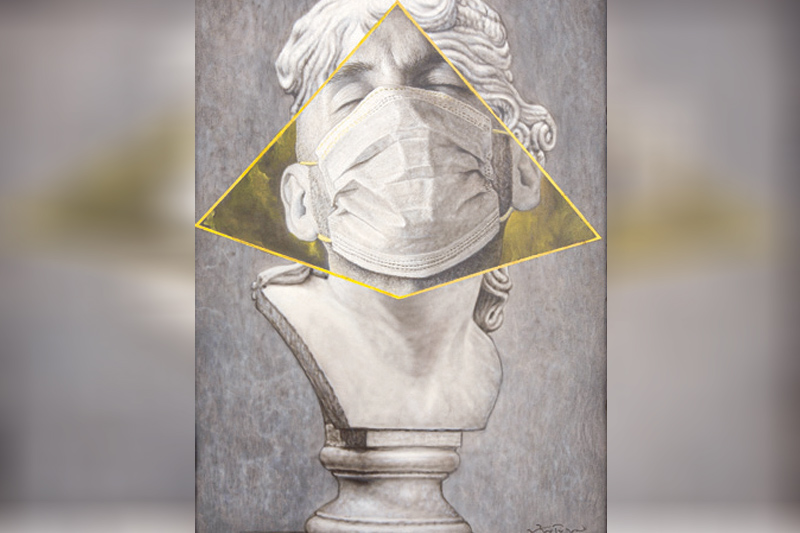Ronald Ventura's paradise alley

We are in Ronald Ventura’s studio somewhere in this pandemic-stricken, limbo-rocking area of Metro Manila, and the artist is talking about “paradise.”
Ventura is referring to a painting of his that spans 12x8 feet and depicts a supposedly idyllic location (waterfalls, clouds in bloom) but superimposed with curiosities such as a flying horse, a hooded Doberman, butterflies, cartoon characters and mysterious equations.
Regarding the gaggle of images on canvas, he explains cryptically, “In an artwork, you don’t necessarily tackle a subject (or come up with a ‘subject’ beforehand), but the combination of images are the ones giving the painting its subject.” He continues, “It can be likened to cooking something — based on your experiences, philosophy, current outlook in life — and then asking viewers, ‘Tikman ninyo ‘to, baka magustuhan ninyo — depende sa panlasa ninyo.’” Burnt sienna, Naples yellow and mental snapshots simmering in a sweet sauce of turpentine and linseed oil.
For his latest suite of paintings, Ventura wants a “rawer” approach. “When you look at images on the Internet, you get them raw — the colors and cropping are inexact,” he explains. “That’s how I want to approach (the superimposition of images in) my current work.” Sometimes, he tweaks with color tones “to make them just right,” much like a chef adding a dash or dab of seasoning.

The epic work titled “Paradise” with its phantasmagoric imagery is Ventura’s version of — believe it or not — “a day in the life.”
“Days are getting stranger and stranger,” he says. “Just like what (gallery owner) Primo Marella says about how life in Milan is becoming more surreal. (Even here in our own country) we are slowly starting to see things that were formerly just in our imaginations. Iba na ‘yung dimension.” Take those long lockdown months, for instance. You get a glimpse of a cityscape without people — empty streets, darkened buildings, a deafening quiet, almost like something straight from a post-apocalyptic movie. Like Cillian Murphy waking up from a hospital bed 28 days later and seeing a deserted London. Or Giorgio de Chirico paintings of mysterious and melancholy streets.
“The paintings we used to see of cities without people, just shadows — nowadays, that is our reality. Umiikot lang ‘yung araw. Everything is changing — surroundings, climate, human interaction.”

Ventura says he works on paintings simultaneously. “Some of them, from five years ago pa pero inabot na ng COVID. You can’t avoid getting affected by the news.” Thus, images insinuated themselves into the picture: a biohazard symbol here, chemical notations there, butterfly wings covering mouths like masks. “They were not intended initially. But that just shows how artists process information.”
The work is festooned with the word “PARADISE” in a carnivalesque font. He explains, “It’s how we Filipinos are. We bring the concept of fiesta wherever we go.” But in the case of the painting, the colors are ambiguous — they don’t clearly state if they suggest joy or merriment. “Maybe they suggest saturation, a changing of seasons, climates or even chapters. The change in the interpretation of colors is never-ending.” If a particular color such as yellow, for example, represented sunshine or euphoria before; now it could symbolize power, caution, or something decaying or hazardous.
“Colors are used in virus (cases or response) charts,” explains Ventura. “So depende talaga sa pag-gamit mo ng kulay. Even a color itself becomes the image.”
To what extent has the pandemic altered Ventura’s imagery and sense of aesthetics?
“Early on, I was already painting figures whose faces were covered. Even before, you could already see today’s events as eventually happening. But the gas-masked figures in my early works were supposed to be symbolic of a sort of toxicity in information, a pollution of thought.” Now they have manifested as something literal and all-too real.

A case of life becoming a scary mimicry of art? You bet. Imagine going out into streets filled with long shadows and cold infrastructure, everyone in masks wary of each other, cartoonish figures trolling from darkly lit corners, texts from Facebook and Twitter haunting and taunting our mental space, something vile, vicious and viral spewing from the mouths of those in power; what is paradise to some may be purgatory to others.
We now officially live in a Ronald Ventura painting.















